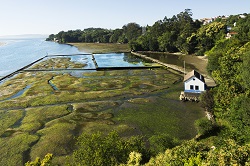How can fish producers tackle climate change?
Global consumption of fish and shellfish has more than doubled over the past 50 years, and is expected to rise further, according to a report by the UN’s Food and Agriculture Organization (FAO). Europe is among the top five fish producers in the world, accounting for about 3.2 % of global fisheries and aquaculture production, according to data by the European Commission. In the EU, 80 % of production comes from fisheries and 20 % from aquaculture, or fish farms. Climate change is rapidly warming Earth and altering the composition and productivity of this sector and affecting fisheries and habitats. How can scientists and the aquaculture industry understand and prepare for the impact of such developments? A team of researchers under the EU-funded CERES project is seeking answers. CERES – named after the Roman goddess of agriculture – is exploring how climate change will influence Europe’s most important fish and shellfish resources and the economic activities depending on them. ‘Blue growth’ of aquaculture and fisheries Summarising CERES on CORDIS, the research team, coordinated by Universität Hamburg, says it will create short-, medium- and long-term projection tools for both the fisheries industry and policymakers to “more effectively promote blue growth of aquaculture and fisheries in different regions.” CERES will also consider market-level responses to changes, both positive and negative, in commodity availability as a result of climate change. Blue growth is the European Commission’s long-term initiative to support sustainable growth in the marine and maritime sectors as a whole. As they explain on the CERES website, the project will scale up physiological and ecological responses of target species to estimate future changes in the productivity of fish and shellfish resources using biological models. According to the website, CERES recently unveiled projections of what ocean temperatures and biogeochemistry will be in 50 years throughout the north-eastern Atlantic and Mediterranean regions. The coordinator notes: “These and other ‘physical’ projections (for the Baltic, Barents and Norwegian Seas as well as freshwater habitats) will be used in biological models to estimate future, climate-driven changes in the productivity of fish and shellfish throughout Europe.” The researchers say that based on future social and economic scenarios, CERES will estimate consequences for the marine and inland fisheries and aquaculture industries. The team hopes to provide industry-driven solutions to minimise the risks and maximise potential benefits of climate change. It will also highlight challenges where current governance structures may hinder future adaptation of such solutions. The regions covered by the ongoing CERES (Climate change and European aquatic RESources) project include high-latitude oceans down to the Mediterranean and European inland waters. For more information, please see: CERES project website
Countries
Germany



